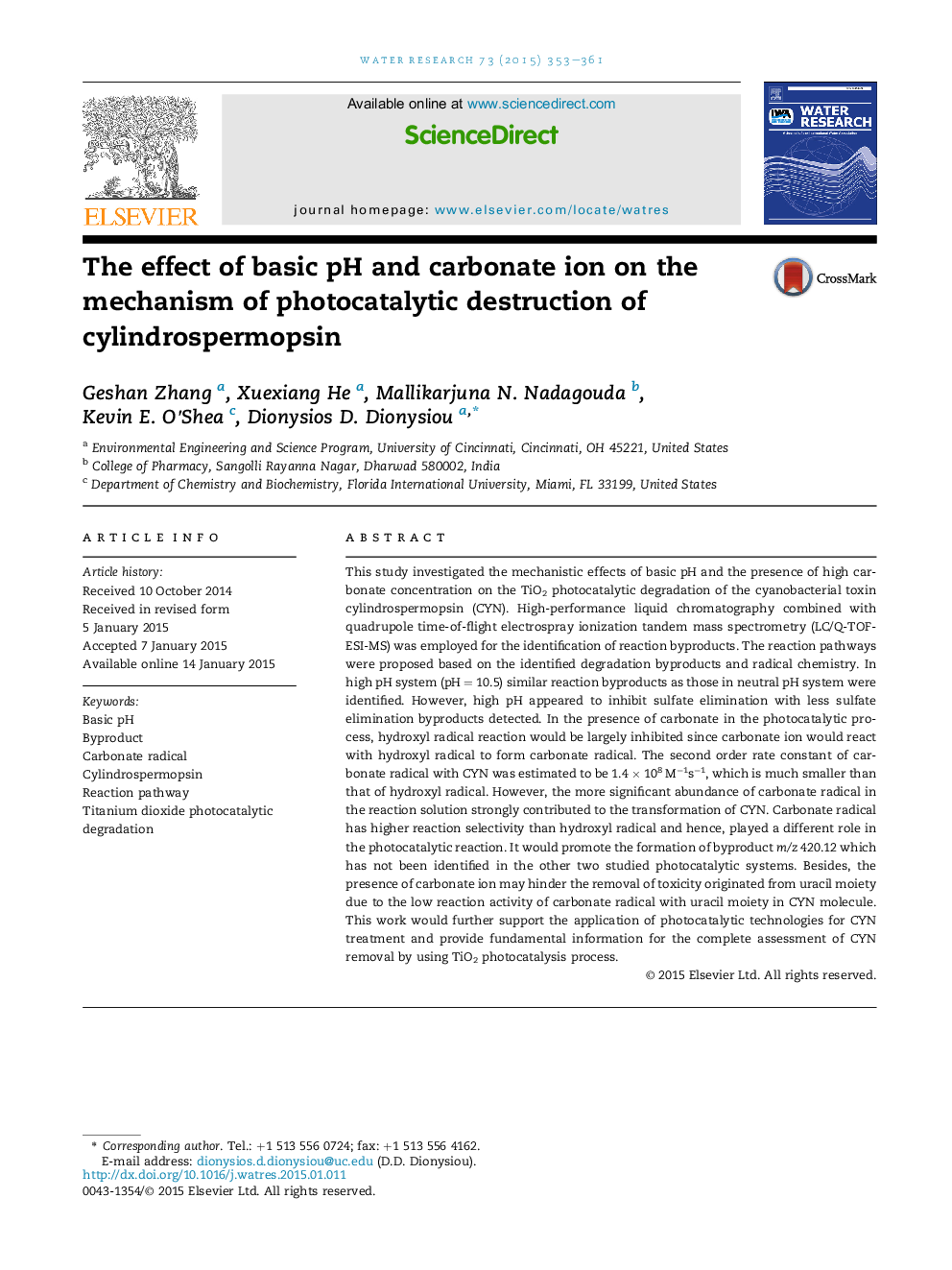| کد مقاله | کد نشریه | سال انتشار | مقاله انگلیسی | نسخه تمام متن |
|---|---|---|---|---|
| 4481253 | 1623095 | 2015 | 9 صفحه PDF | دانلود رایگان |

• Basic pH and carbonate ion mechanistically impact on CYN photocatalytic destruction.
• Basic pH can minimize sulfate elimination of TiO2 photocatalytic degradation of CYN.
• Carbonate ion can scavenge hydroxyl radical to form carbonate radical.
• The second-order rate constant of CO3
• − with CYN was estimated to be 1.4 × 108 M−1s−1.
This study investigated the mechanistic effects of basic pH and the presence of high carbonate concentration on the TiO2 photocatalytic degradation of the cyanobacterial toxin cylindrospermopsin (CYN). High-performance liquid chromatography combined with quadrupole time-of-flight electrospray ionization tandem mass spectrometry (LC/Q-TOF-ESI-MS) was employed for the identification of reaction byproducts. The reaction pathways were proposed based on the identified degradation byproducts and radical chemistry. In high pH system (pH = 10.5) similar reaction byproducts as those in neutral pH system were identified. However, high pH appeared to inhibit sulfate elimination with less sulfate elimination byproducts detected. In the presence of carbonate in the photocatalytic process, hydroxyl radical reaction would be largely inhibited since carbonate ion would react with hydroxyl radical to form carbonate radical. The second order rate constant of carbonate radical with CYN was estimated to be 1.4 × 108 M−1s−1, which is much smaller than that of hydroxyl radical. However, the more significant abundance of carbonate radical in the reaction solution strongly contributed to the transformation of CYN. Carbonate radical has higher reaction selectivity than hydroxyl radical and hence, played a different role in the photocatalytic reaction. It would promote the formation of byproduct m/z 420.12 which has not been identified in the other two studied photocatalytic systems. Besides, the presence of carbonate ion may hinder the removal of toxicity originated from uracil moiety due to the low reaction activity of carbonate radical with uracil moiety in CYN molecule. This work would further support the application of photocatalytic technologies for CYN treatment and provide fundamental information for the complete assessment of CYN removal by using TiO2 photocatalysis process.
Figure optionsDownload high-quality image (148 K)Download as PowerPoint slide
Journal: Water Research - Volume 73, 15 April 2015, Pages 353–361